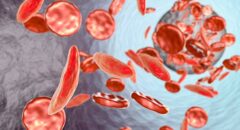blindness, numbness of the feet and ankles, hip, knee or ankle surgery/replacements and stroke may all affect balance and rate of falls independent of sickle cell anemia.
The most common causes of damage to the inner ear, home to the hearing and balance systems, include a lack of oxygen due to the decreased carrying capacity of sickled red blood cells. The sickling of the cells can lead to “sludging” of blood in the inner ear, increasing inner ear damage. Damage to inner ear structures such as labyrinthine ossification or hemorrhage and even ischemia of the Organ of Corti are also complications associated with sickle cell anemia.
Sickle cell anemia is a condition that can be managed through several lifestyle modifications. Supplementation with folic acid and maintaining a high water intake have been linked to a reduction in sickle cell crises. Avoiding extreme temperatures, doing regular exercise and the use of some over-the-counter medications can also help manage sickle cell anemia.

Dr. Kevin Kinney, board certified and licensed Chiropractic Physician featured on INSIDER.com, TheTodayShow.com & BlackDoctorsMatter.org. Connect with Dr. Kev at drkevinkinney.com or @DrDuval904








